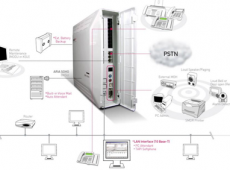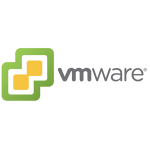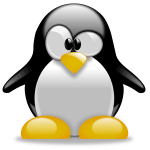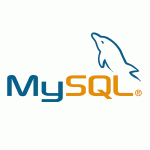iPECS-MG Training – Station Group
Power Point presentation for Station Group of LG-Ericsson iPECS-MG. This is Part 7 from iPECS-MG Training Materials.
iPECS-MG Station Group — Presentation Transcript
- Station GroupBusiness EnabledCommunications
- Contents•Station Group – Circular/Terminal/Longest Idle/Ring/Voice Mail – Station Group Announcement – Station Group Feature•Pick Up Group•Page Group•Command Conference Group – One way / Conference•PTT Group•Interphone Group•Pilot Hunt Group – Call Forward – Call Coverage
- Station Group Station Group Capacity SYSTEM No of Group No. of Member Number iPECS-MG 300 50 50 620 ~ 669 iPECS-MG 100 20 50 620 ~ 639 Station Group Attributes
- Station Group Group Assignment (PGM 200)In each group, Group type, Name, Tenant, Time table, Pick up option can be programmed.Max. 50 member can be assigned in a group. •Group Assignment Max 50 members can be assigned in a group. •Group Type The following type can be selected. Terminal, Circular, Ring, Longest Idle, Voice Mail • Group Name This will be provided with LCD message when a member receive Group Ring. GROUP 620 RING 04504629 (Help Desk) • Tenant Number Tenant can be assigned to each group. A call to a group can be restricted according to Tenant Access (PGM 283). • Time Table Index Time table can be assigned to each group. This is defined for the ring mode of forward destination. Member can be assigned/deleted • Pick Up Option with Range/Individual Case Group can be used as Pick up group with the following option (Disable, All Call, Internal, External)
- Station Group Circular (Round-robin search) Terminal (First-to-last search) An idle member of the hunt group is called when a If the call is unanswered or unavailable, it is routedcall is received. If unavailable or unanswered,the call is routed to the next station in the group. to the next listed station in the group. STA101 answer STA101 STA101 STA100 STA102 STA100 STA102CO LINE 1 CO LINE 1 STA103 STA103 STA105 STA105 CO LINE 2 CO LINE 2 STA104 STA104
- Station Group Longest Idle RingCalls are routed to the station in the group that has All the stations in the group will receive ring for abeen idle for the longest time. call of station group when a call is received STA101 STA101 CO LINE 1 CO LINE 1 STA100 STA100 STA102 STA102 CO LINE 2 STA103 STA105 STA103 STA104 CO LINE 3 STA105 STA104
- Station Group Greeting/Queuing Tone (PGM 201) • Greeting Tone When a call is routed to a Station Group, Greeting Tone is played during Greeting Play Timer and repeated during repeat counter. • Queuing/Second Queuing Tone If all member of group is busy, Queuing Tone Is played and repeated during repeat counter. If Greeting/Queuing Timeout timer is expired, a call is routed to forward destination. • Tone Type Normal/Prompt/Announcement/Internal MOH External MOH/SLT MOH/ VMIB MOH • CCR During Announcement CCR service can be provided during queuing announcement is played. • MOH for Prompt/Annc. MOH can be provided during Repeat delay time.(INT/EXT/VMIB/SLT MOH)
- Station Group Greeting/Queuing Tone (Prompt & Announcement case) Greeting Tone RBT RBT Real Recording Time Delay Time Repeat Counter or, Greeting Tone Start Greeting Tone Greeting Play Timer is expired. Start Queueing Tone RBT/MOH RBT/MOH Real Recording Time Delay Time Repeat Counter Queueing Tone Start Queueing Tone Start is finished. Queueing Forward Timer 2nd Queueing RBT/MOH RBT/MOH Tone Real Recording Time Delay Time Repeat Counter Queueing Tone Start Queueing Tone Start is finished.
- Station Group Additional Attributes (PGM 202) • Call In Greeting (Member Ring Start Time) • Apply Time Type -. In Greeting : Provide ring to member during Greeting. It defines the time to apply forward feature. -. After Greeting: Provide ring to member after (All/Day/Night/Timed) Greeting. • Forward Destination • Max Queue Count It defines the destination to forward. It defines maximum queue count of each group. • Wrap Up Timer • Forward Type A member does not receive the next call during this It defines forward type of group. timer when he goes to idle state. 1.Not Use – Call is routed to Error destination • Member No-Answer Timer 2.Unconditional – Call is directly routed to forward If a member doesn’t answer the call during this timer, destination it is routed to the next member. 3.Queueing overflow – When Queue count overflows • Ring No-Answer Forward Timer 4.Queueing timeout – When Queueing timer expires. If a member doesn’t answer the call during this timer, 5.Queueing overflow or timeout – case 3 or 4 it is routed to the forward destination
- Station Group Basic Flow 1. When there’s an available member in group If Ring No Answer Forward timer expires, First idle member rings Next idle member rings Member No answer Time Ring Greeting RBT RBT/MOH Annc. Repeat Counter or, Real Recording Time Delay Time Greeting Play Timer is expired. Greeting Annc Greeting Annc. Repeated If Queuing Forward timer expires, 2. When there’s no available member in group Queuing RBT/MOH RBT/MOH Annc. Repeat Counter Real Recording Time Delay Time is finished. Queuing Annc Queuing Annc Repeated
- Pick Up Group Group Capacity SYSTEM No of Group No. of Member iPECS-MG 300 50 100 iPECS-MG 100 20 100 Pick Up Group Attributes Pick Up Group allows to pick up the call among members. • Pick Up Condition -. All Call Pick up is allowed about all call. -. Internal Call Pick up is allowed about internal call -. external Call Pick up is allowed about external call • Feature Code SYSTEM Direct Pick Up Group Pick Up iPECS-MG 300/100 7 + Station No. 566
- Page Group Group Capacity SYSTEM No of Group No. of Member iPECS-MG 300 30 50 iPECS-MG 100 15 50 • PGM 134-Flex 2(Page Access) : Enable Page Group Attributes • PGM 151(Internal Zone Page Group Access) : Enable Group Access A station, which is allowed to access page feature, can speak to any or all the internal/external page zones. • Operation 1.Lift Handset. Dial Page Feature Code STA101 2.Dials Page zone feature code. + Group No 3.Dials zone index. STA100 STA102 4.Speaker of phones in zone goes open(ON) and Station A can announce the message. PAGE STA A • Feature Code. STA105 ZONE 1 STA103 SYSTEM Internal Page External Page All Call Page STA104 iPECS-MG 300/100 543 + Group No. 548 549 (00: All group)
- Command Conference Group Group Capacity SYSTEM No of Group No. of Member iPECS-MG 300 10 12 iPECS-MG 100 10 12 Command Group Attributes Stations and external contacts (up to 12 members) can be arranged in groups so that a user may create a conference or paging with all members in the group through a single call. • Command Page (One Way) Only the caller can make announcements (paging) to members of the Command Group. • Command Conference (Both Way) A user can make conference calls with members of the Command Group • Feature Code • PGM 152(Command Group Access) : Enable Group Access Command Group Command Page Command Conference iPECS-MG 300/100 581 + Group No. (00~10) 580 + Group No. (00~10)
- Command Conference Group Group Attributes • On Hook Service 1.On Hook – if a called party member goes to on-hook, he leave the conference 2.Recall – if a called party member goes to on-hook, he receives recall ring. • Busy Service (One-Way/Both-Way) 1.Busy – if a member is busy, Command call is established without this member. 2.Request Queuing – if a member is busy, Command call will queue to this member. 3.Recover call – if a member is busy, Command call is established with a member in busy state and original call is disconnected. Dial One Way or Conference Command Call PSTN ONE WAY COMMAND CALL External Code + Group No 1234567 (580 / 581 + 01) CONFERENCE COMMAND CALL STA 3000 STA3001
- PTT Group Group Capacity SYSTEM No of Group No. of Member iPECS-MG 300 10 50 iPECS-MG 100 10 50 PTT Group Attributes The user may log-in or log-out to one group, or to group 0 (all PTT group). Once logged in, the user may place or receive one-way page announcements to/from other users who are logged in to the same PTT group. •Log In 1.Dial the {PTT Group Log-In/Out Feature Code}; the PTT • Operation Group status and registration will be displayed. 1.Press PTT button. 2.Dial PTT Group No (0 – 9) 2.SPK of All Log-In Station will be on. 3.Press PTT button to stop the PTT. • Log Out 1.Dial the {PTT Group Log-In/Out Feature Code}; the PTT • PTT Button : Group status and registration will be displayed. PGM + Flex + 2(Fixed Key) + Select PTT + SAVE 2.Dial * PTT Log-In/Out Feature Code 538
- Interphone Group Group Capacity SYSTEM No of Group No. of Member iPECS-MG 300 10 10 iPECS-MG 100 10 10 Interphone Group Attributes To call a station using a simple, one-touch digit, Stations can be put into an Interphone Group. (up to 10 members). Call is available only between members. • Operation 34501001 1.Dial {Interphone Group Access} Feature code. 2.Dial one digit. 34501000 34501002 • Feature Code. Make a Call with Interphone Group “534 + 0” Interphone Access Feature 34501005 Group 34501009 code 534 34501006 Make a Call with “534 + 6”
- Pilot Hunt Group Group Capacity SYSTEM No of Group No. of Member iPECS-MG 300 50 20 iPECS-MG 100 20 20 Pilot Hunt Group – Call Forward • Pilot Hunt Call Forward If a call is routed to member of pilot hunt group, a call is automatically routed to forward destination according to RING MODE (Day/Night/Timed). • Register Pilot Hunt Call Forward 1.Dial {Forward Register Feature code} 2.Select Call Forward Type. (Unconditional/Busy/No answer/Busy-No answer) 3.Dial destination (Station or Station Group). • Cancel Pilot Hunt Call Forward 1.Dial {Forward Cancel Feature code} • Feature Code. SYSTEM Forward Register Forward Cancel iPECS-MG 300/100 514 515
- Pilot Hunt Group Pilot Hunt Group – Call Coverage • Pilot Hunt Call Coverage The member of Pilot Hunt Group can cover the call for other member. • PGM 131-Flex 5(Busy Service) : Pilot Hunt • Busy Service • PGM 134-Flex 6(Pilot Hunt Ring Assign) : Enable 1.Station can be programmed the busy service as Pilot Hunt. (Busy Tone/Camp-On/Call-Wait/Pilot Hunt) CO LINE 2 2.If he receives the call from Internal/external party, a call is routed to next member according to Service and Type. CO LINE 1 •Service : All Call / Intercom call / External Call •Type : Terminal /Circular STA 100 STA102 STA101 Pilot Hunt STA103 STA105 Group STA104
- Queued Hunt Call Pick-Up Calls queued for a station group (Normal, ACD, Attendant) can be picked up Calls Station Group in ACD Group Waiting Queue Attendant Group 1. A station dials {Direct Call Pick Up} feature code (ex. ‘7’) 2. And station group, ACD group number or {Attendant Call} feature code is dialed 3. The oldest queued caller is connected to station.
- Attendant Group Business Enabled Communications
- Contents•Attendant Group – Capacity – Attributes – Group Assignment•Night Attendant Group – Capacity – Attributes – Group Assignment
- Attendant Group Attendant Group Capacity SYSTEM No of Group No. of Attendant iPECS-MG 300 9 (one per Tenant) 5 iPECS-MG 100 5 (one per Tenant) 5 Attendant Group Attributes
- Attendant Group Group Assignment (PGM 270, 271, 272) • Attendant Assignment Max 5 Attendants can be assigned in a tenant. • Group Type The following type can be selected. Terminal, Circular, Ring, Longest Idle, Ring • Group Name This will be provided with LCD message when a member receive Group Ring. GROUP ATD RING 04504629 (Main ATD Group) • CO Attendant Number If this number is assigned, system analyzes this number before it analyzes numbering plan/digit conv. table. • Attendant Call by Station number Basically, Attendant call is activated when a caller dial Attendant call code. But, if this is enabled, attendant call is activated when a caller dials the number of attendant member.
- Attendant Group Attendant Feature • ACCESS [PGM] + 0 + (1~9, *, #) • 1. SMDR Print/Delete • 2. Traffic Print/Delete • 3. COS / Password • 4. DATE / TIME / Wake Up • 5. Preselected Message • 6. VMIB Announcement Record/Listen • 7. User Program (Name/Language/Prepaid/Feature Cancel) • 8. Ring Mode Change/ Conference Room Monitor-Delete • 9. USB (Upgrade/ DB Up/Download) • * + #. Admin Programming • #. DECT Registration
- Attendant Group Night Attendant Group Capacity SYSTEM No of Group No. of Attendant iPECS-MG 300 9 (based on tenant) 5 iPECS-MG 100 5 (based on tenant) 5 Night Attendant Group Attributes
- Attendant Group Group Assignment (PGM 275, 276, 277) • Night Attendant Assignment Max 5 Member can be assigned in a tenant. • Group Type The following type can be selected. Terminal, Circular, Ring, Longest Idle, Ring • Operation In the following state, a attendant call is routed to night attendant Group 1.All attendant goes to DND states. 2.Ring mode of Tenant is Night mode. CO LINE CO LINE STA 100 STA101 STA102 STA110 STA111 STA 100 STA101 STA102 Attendant Gr. Night ATD Gr. Attendant Gr.
- ACD GroupBusiness EnabledCommunications
- Contents•ACD Group – Capacity & Attributes – Status Service for Group Call – Call Queuing & Forward Service – Call Distribution by Agent Priority – Agent State•ACD Group Supervisor Function – Group Status Management – Agent Management and Monitoring – Group Call Traffic Analysis
- ACD Group ACD Group Capacity SYSTEM No of Group Supervisor Agent Queuing Step Agent Priority iPECS-MG 300 50 1 (Sub-Supervisor 50 5 20 3) iPECS-MG 100 20 1 (Sub-Supervisor 50 5 20 3) ACD Group Attributes (PGM 212 ~ 215)
- ACD Group ACD Group Status Service for ACD Group Call Status Means Service Normal General In-Service Status Forward Forward Status 1. Forward (Unconditional) Night Night time Status 1. Release 2. Night Announcement Service 3. Forward Holiday Holiday time Status 1. Release 2. Holiday Announcement Service 3. Forward • Forward Destination: Station / Station Group / Other ACD Group / Digits • Forward, Night, or Holiday, these kinds of status can be set manually by Administrator or Main Supervisor • Night, Holiday Status can be changed automatically by Auto Status Change Admin PGM212-Index5 • In case of Announcement Service in Night, Holiday, assigned Announcement is played first and then the call is released
- ACD Group ACD Call Queuing & Forward Service • Max Queuing Count Max 99 Group Call can be queued. • Queuing Announcement Service Max 5 Announcement can be served • Queuing Announcement Repeat Service Queuing Annc. can be rotated until repeat count • Forward Service After Queuing Time 1. Call Release 2. Forward to registered destination • 5 Step Queuing Announcement Can be defined • CCR Service
- ACD Group ACD Call Distribution by Agent Priority – There are 20 levels as priories. – First higher priority group’s agents will receive the ACD call first. If there’s no idle agent, the next priority group’s agent will receive the ACD call. 1 ACD Group Call Priority-1 Group STA 2003 STA2005 2 STA2004 3 Web: ACD Agent State & Priority Priority-10 Group Priority-2 Group STA 2009 STA2011 STA 2006 STA2008 STA2010 STA2007
- ACD Group Agent State – Agent can has 4 states (Log-Out / Log-In Ready / Log-In Work / Log-In DND) – Supervisors can check and change agent’s state After Work-Out Timer After Grp. Call Work State or Other Rules Log-Out State Ready State DND Feature Code Can Receive the Grp. Call DND Feature Code DND State
- ACD Group Supervisor Function Group Status Management (Station Web of Main Supervisor) – Main Supervisor can check and change Group Status (Normal / Forward / Night / Holiday) – Main Supervisor can make rules how to handle the ACD Call in each Group Status – Main Supervisor can manage Group Status with Specific Feature Code [ACD Supervisor Group Call Forward] [ACD Supervisor Group Night Mode] [ACD Supervisor Group Holiday Mode] – Main Supervisor can manage the Group Status by his Station Web Program Station Web Programof Main-Supervisor
- ACD Group Supervisor Function Agent Management and Monitoring – Supervisors can change Agent State (Log-Out / Log-In Ready / Log-In Work / Log-In DND) – Supervisor can answer the Queued Group Call – Supervisor can monitor the agent’s conversation -Supervisor’s Specific Feature Code for Agent Management [ACD Supervisor Agent State Check] / [ACD Supervisor Queued Call Answer] / [ACD Supervisor Silent Monitor] – Supervisor can manage Agent State by the Station Web Program Station Web Programof Main-Supervisor
- ACD Group Supervisor Function Group Call Traffic Analysis – ACD Group Call Traffic information is saved automatically – Supervisors can check and delete Group Call Traffic information – Supervisor also can check each agent’s Call Traffic information – Supervisor’s Specific Feature Code for Traffic Information [ACD Supervisor Traffic Check] – Supervisor can manage Group or Agent Call Traffic by his Station Web ProgramStation Web Programof Supervisor
LG-Ericsson: http://www.ericssonlg.com
Subscribe
0 Comments





